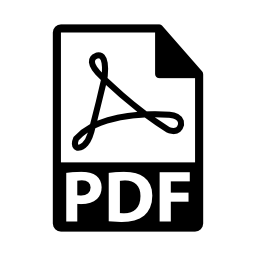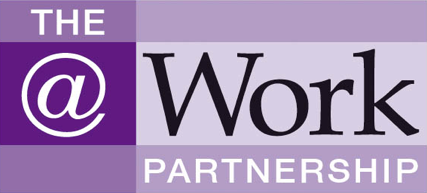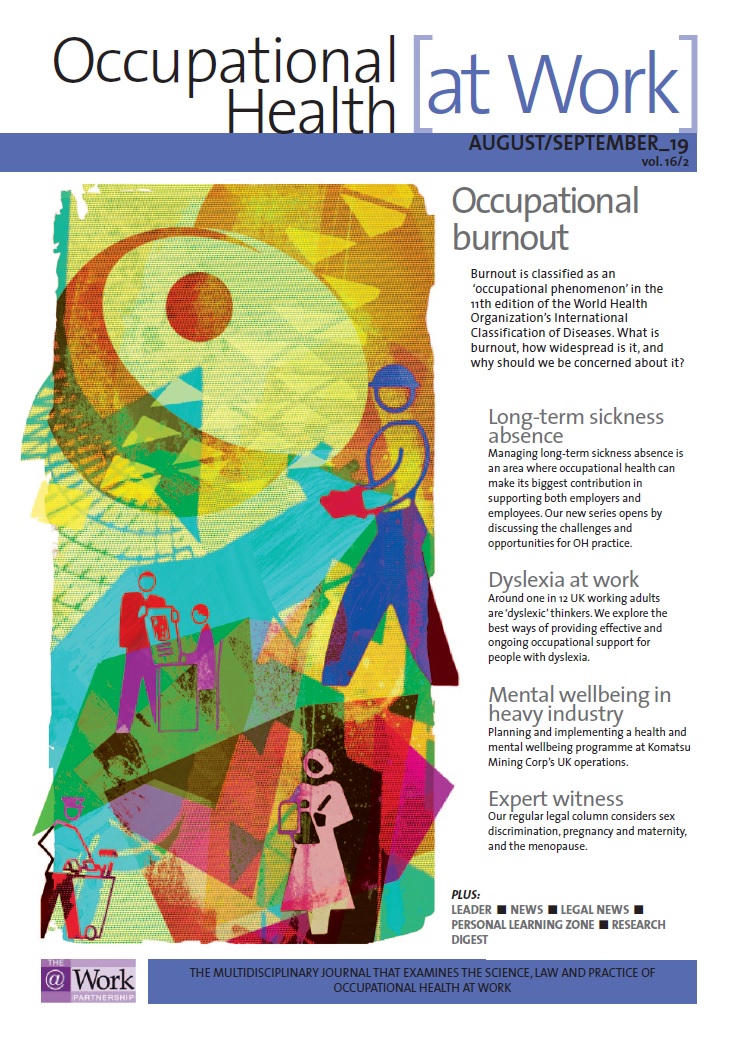August/September 2019 (vol. 16/2)
ContentsFeaturesNewsLegal
NewsResearch DigestResearch PlusCPD
 Personal Learning Zone in this issue
Personal Learning Zone in this issue
Summary:
FEATURED ARTICLE:
This issue of Occupational Health [at Work] features a Personal Learning Zone (PLZ) article recommended for continuing professional development (CPD). The assignment questions, ‘Personal learning statement’ and ‘Certificate of engagement’ are available to subscribers at here. These will also be stored in your password-protected PLZ. The PLZ will help you document your own CPD. Occupational health physicians and nurses, occupational hygienists and other professionals can use the resource in support of their specialism’s revalidation or CPD requirements.
This issue’s featured article is:
Pages 19–27. Understanding burnout. The WHO has classified burnout as a distinct occupational phenomenon in the 11th edition of its International Classification of Diseases. Burnout is not a medical diagnosis, but an understanding of its impact on organisations, individuals and others is crucial. Burnout is like a ‘canary in a coalmine’, says one of the world’s leading experts, acting as ‘a warning that the environment is getting toxic’.
ADDITIONAL CPD
The following articles, news and research items are suggested reading for CPD and professional revalidation. Subscribers can complete their online Personal Learning Zone CPD record at here
Page 14-18. There is no single approach that will facilitate the return to work of an employee on long-term sickness absence, and any triggers for referral of an employee to OH should be determined by factors linked to the condition and prognosis. Trigger points for referral to OH should thus be treated as indicators rather than rules.
Page 28-31. Modifying the work environment, schedule flexibility, coaching and assistive technology are just some of the workplace adjustments that can help people with dyslexia thrive in the workplace.
Pages 36-38. Direct discrimination on grounds of pregnancy or maternity is unlawful. But a woman can also claim direct sex discrimination if she is treated unfavourably for a reason connected to pregnancy or childbirth even after the ‘protected period’ has ended. A woman who has returned to work after maternity, but is subsequently dismissed for a long-term absence due to post-natal depression will be able to establish discrimination if a man of f work for a similar period would not have been dismissed
Pages 39-42. Our compendium of recent research in OH includes a Danish nationwide cohort study that found that working at least two nights a week in the previous week increases the risk of a miscarriage the following week by around one-third. Other research includes a systematic review and meta-analysis demonstrating the link between perceived job insecurity and poorer mental health.
Author: The At Work Partnership Ltd
Occupational Health at Work August/September 2019 (vol. 16/2) pp43



